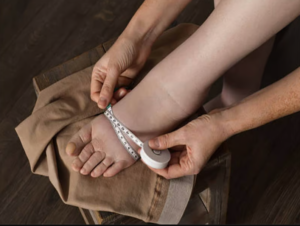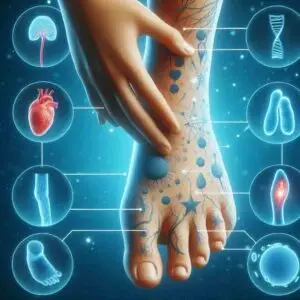Understanding Postpartum Swelling and Its Impact on Postpartum Recovery
The postpartum period is a transformative time for women, marked by both physical and emotional changes as the body begins to heal after childbirth. One common issue many women face during this time is postpartum swelling, also known as postpartum edema. This condition can affect various parts of the body, including the legs, feet, and even the abdominal area. Understanding the causes, duration, and management of postpartum swelling is crucial for ensuring a smoother recovery, especially for those who have undergone a C-section. In this article, we will explore the complexities of postpartum swelling and its impact on postpartum recovery, providing insights into effective management strategies.
What is Postpartum Swelling and Is It Normal?
Postpartum swelling, or edema, refers to the accumulation of excess fluid in the body’s tissues after giving birth. It is a normal physiological response as the body adjusts post-childbirth, often resulting in noticeable puffiness in various areas, including the legs and feet. While it can be uncomfortable, postpartum swelling is typically a temporary condition that resolves as the body expels the excess fluid. However, understanding what causes postpartum swelling can help women navigate this common issue with more confidence.
What Causes Postpartum Swelling?
Several factors contribute to postpartum swelling. During pregnancy, the body retains extra fluid to support the growing fetus, leading to increased water retention. After childbirth, hormonal changes, the physical stress of labor, and the body’s efforts to restore normal function all play a role in postpartum swelling. Additionally, prolonged sitting or standing after giving birth can exacerbate swelling in the legs and feet. In some cases, women may experience swelling in one leg, which can indicate other issues that require attention.
How Long Does Postpartum Swelling Last?
The duration of postpartum swelling varies from woman to woman. In most cases, postpartum swelling is most pronounced in the first few days following childbirth and tends to improve significantly within two weeks. However, for some postpartum women, swelling may persist for several weeks, especially if they are experiencing fluid retention due to factors like dehydration or excessive salt intake. It is essential for individuals to monitor their swelling and consult a healthcare provider if it does not begin to resolve within the expected timeframe.
Signs of Postpartum Edema to Watch For
While some degree of postpartum swelling is normal, it is important to be aware of signs that may indicate a more serious issue. Symptoms such as chest pain, difficulty breathing, and shortness of breath can be warning signs of complications like postpartum preeclampsia or blood clots. Women should remain vigilant for swelling that appears suddenly or is accompanied by severe pain, especially in one leg. Recognizing these signs early can be crucial for ensuring timely medical intervention.
How Does Postpartum Swelling Affect Recovery After C-Section?
Recovery after a C-section can be complicated by postpartum swelling, which may prolong the healing process. Women who have undergone a cesarean delivery may experience increased swelling due to the surgical trauma, which can affect fluid balance in the body. Understanding how postpartum swelling affects recovery is vital for managing expectations and ensuring a smoother transition during this challenging time.
Postpartum Swelling After C-Section: What to Expect
Postpartum swelling after a C-section can manifest as noticeable puffiness in the abdomen, legs, and feet. The surgical incision can also contribute to localized swelling in the abdominal area. Women may find that their ankles and feet swell significantly, making it uncomfortable to walk or stand for prolonged periods. This swelling is part of the healing process, but it can also impact mobility and increase the risk of complications, such as blood clots.
Managing Swelling During Recovery from C-Section
To manage swelling during the recovery process after a C-section, women can adopt several strategies. Staying hydrated is crucial, as proper hydration helps reduce fluid retention and assist the body in flushing out excess fluid. Gentle postpartum exercise, such as walking or stretching, can promote blood flow and aid in reducing swelling. Additionally, lymphatic drainage massage can help alleviate puffiness and improve circulation, facilitating a more efficient recovery.
When to Contact Your Healthcare Provider About Swelling
If swelling persists or worsens despite self-care measures, it is essential to contact a healthcare provider. Signs that warrant immediate medical attention include severe swelling accompanied by abdominal pain, headaches, or changes in vision, which could indicate postpartum preeclampsia. Women should also seek medical advice if they experience swelling in one leg, as this could be a sign of a blood clot that requires prompt treatment.
Can Postpartum Exercise Help Reduce Swelling?
Engaging in safe postpartum exercise can play a significant role in reducing postpartum swelling and promoting overall recovery. Exercise encourages better circulation, which can help alleviate fluid retention and reduce swelling. It is important for postpartum women to consult their healthcare provider before beginning any exercise regimen to ensure it is safe and appropriate for their individual circumstances.
Safe Postpartum Exercises to Reduce Swelling
Safe postpartum exercises include gentle activities such as walking, pelvic tilts, and light stretching. These exercises can help strengthen abdominal muscles and improve blood flow, which can contribute to reducing swelling. Incorporating movements that elevate the legs can also be beneficial in encouraging fluid drainage from the lower extremities. It is essential to listen to the body and avoid overexertion, especially in the early stages of postpartum recovery.
Benefits of Lymphatic Drainage Massage for Postpartum Recovery
Lymphatic drainage massage can be an excellent complementary therapy for postpartum recovery. This gentle massage technique targets the lymphatic system, encouraging the movement of lymph fluid and reducing swelling. By promoting circulation and reducing inflammation, lymphatic drainage massage can help postpartum women feel more comfortable and support their overall healing process. Many women find this massage technique to be a soothing and effective way to manage postpartum edema.
How to Stay Hydrated and Reduce Fluid Retention
Staying hydrated is key to reducing postpartum swelling. Drinking plenty of water throughout the day helps the body flush out excess fluid and reduces the likelihood of water retention. Additionally, incorporating foods with high water content, such as fruits and vegetables, can further support hydration. Limiting salt intake can also help manage fluid retention, as salt can cause the body to hold onto excess fluid. By prioritizing hydration, postpartum women can aid their recovery and reduce swelling effectively.
What Are the Risks of Severe Postpartum Edema?
While mild postpartum swelling is generally considered normal, severe postpartum edema can pose risks that should not be overlooked. Understanding these risks is crucial for ensuring the safety and well-being of postpartum women. Monitoring swelling and recognizing potential complications can help women take proactive steps in their recovery.
Understanding Postpartum Preeclampsia Symptoms
Postpartum preeclampsia is a serious condition characterized by high blood pressure and signs of organ dysfunction that can occur after childbirth. Symptoms may include severe headaches, vision changes, and significant swelling. It is vital for women to be aware of these symptoms and seek medical attention if they experience any of them, as preeclampsia can lead to severe complications if left untreated.
Signs of Potential Complications from Swelling
In addition to preeclampsia, signs of potential complications from swelling can include sudden weight gain, severe leg swelling, or severe discomfort in the abdomen. Women should take these symptoms seriously and consult their healthcare provider to rule out conditions such as blood clots or other serious issues. Early intervention can be critical in managing these complications effectively.
Blood Clots and Swelling: What to Know
Swelling in one leg can be a warning sign of a blood clot, a condition known as deep vein thrombosis (DVT). Symptoms may include warmth, redness, and swelling in the affected leg. Women should be vigilant about these signs, especially during the postpartum period, when the risk of blood clots can increase due to changes in blood flow and hormone levels. If a blood clot is suspected, immediate medical attention is necessary to prevent serious complications.
How Can Compression Stockings Help with Swollen Feet?
Compression stockings can be an effective tool for managing swollen feet during the postpartum period. These specially designed stockings apply pressure to the legs, helping to improve blood circulation and reduce swelling. Understanding when and how to use compression stockings can significantly enhance postpartum recovery for women experiencing edema.
Choosing the Right Compression Stockings for Postpartum Care
When selecting compression stockings, it is essential to choose the right level of compression. Stockings are available in varying degrees of pressure, and postpartum women should consult their healthcare provider to determine the best option for their needs. Proper fit is also crucial; stockings should be snug but not uncomfortably tight, ensuring they provide adequate support without restricting blood flow.
When to Use Compression Stockings Postpartum
Compression stockings can be beneficial for postpartum women who experience significant swelling in the legs and feet, particularly after long periods of sitting or standing. Wearing compression stockings during the day can help manage swelling and improve comfort. However, they should be removed at night unless otherwise directed by a healthcare provider.
Combining Compression with Other Techniques to Reduce Swelling
Using compression stockings in conjunction with other techniques can enhance their effectiveness in reducing swelling. For instance, combining compression with regular movement, staying hydrated, and incorporating lymphatic drainage massage can provide comprehensive support for postpartum recovery. This multifaceted approach can help women navigate the challenges of postpartum swelling more effectively and promote a smoother healing process.
FAQS
Q: What is considered postpartum swelling normal after giving birth?
A: Postpartum swelling normal refers to the swelling that many women experience after childbirth, which can be due to fluid retention from pregnancy and the postpartum period. This swelling usually subsides within a few weeks but can be more pronounced after a vaginal birth.
Q: How can I reduce postpartum swelling effectively?
A: To reduce postpartum swelling, you can elevate your legs, stay hydrated, engage in light exercise, and consider lymphatic massage can help. Additionally, reducing salt intake may also assist in managing swelling.
Q: What are the common causes of postpartum swelling?
A: The causes of postpartum swelling include the accumulation of fluids during pregnancy, hormonal changes, and the body’s natural response to childbirth. It can also be exacerbated by IV fluid administered during labor.
Q: How does pregnancy and postpartum affect swelling in the body?
A: During pregnancy and the postpartum period, the body retains more fluid to support the growing fetus. After childbirth, this excess fluid can lead to postpartum swelling, especially in the legs and ankles.
Q: Is swelling during pregnancy related to postpartum recovery?
A: Yes, swelling during pregnancy can lead to postpartum swelling as excess fluids accumulated during pregnancy may take time to be eliminated from the body after delivery.
Q: What can I expect during my first postpartum week regarding swelling?
A: During your first postpartum week, you may experience significant swelling, particularly in your legs and ankles. This is common and should gradually decrease as your body adjusts after childbirth.
Q: When should I contact my doctor about postpartum swelling?
A: You should contact your doctor if you experience painful swelling, sudden increases in swelling, or swelling that does not improve after a few weeks postpartum, as these may indicate underlying issues.
Q: Can I still experience ankle swelling weeks postpartum?
A: Yes, ankle swelling can persist for weeks postpartum as your body continues to rid itself of excess fluids. However, if the swelling is severe or accompanied by pain, it is advisable to consult a healthcare professional.
Q: What role does manual lymphatic drainage play in managing postpartum swelling?
A: Manual lymphatic drainage is a specialized massage technique that can help improve lymphatic circulation and reduce postpartum swelling. It may be beneficial for women experiencing prolonged swelling after childbirth.
Q: How does the method of delivery impact postpartum swelling?
A: The method of delivery, such as vaginal birth, can influence the amount of postpartum swelling experienced. Vaginal birth may result in less swelling compared to a caesarean section, primarily due to less fluid retention and trauma to surrounding tissues.





